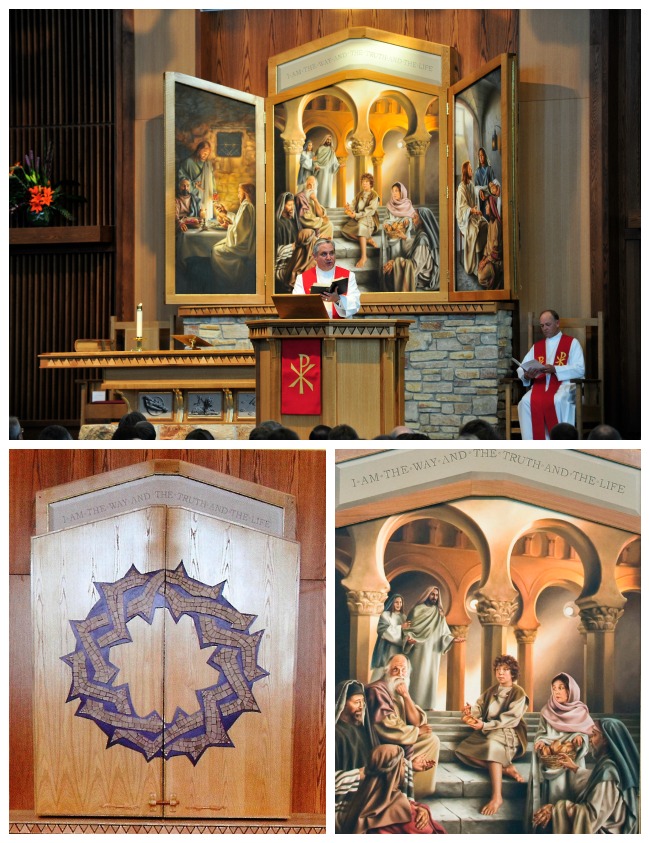As jewels have their settings, an altar is installed against an altarpiece—perhaps a stained glass window, a towering collection of statues, or a cross bracketed to the wall. In the Chapel of the Christ, the altarpiece is a trio of paintings called a triptych.
The triptych has doors that close over the main painting. When closed, usually during Lent, the doors display a wood mosaic of end-grain oak, the crown of thorns. When open, three paintings show our Lord as Teacher.
High overhead, the college’s motto appears in trompe l’oeil, “I am the way and the truth and the life.” In the left-hand painting, the risen Jesus teaches the two disciples, dining with him in Emmaus, that he is the Way. In the central panel, the 12-year-old Jesus appears in the temple and amazes the teachers with the Truth of his words. And in the right-hand painting, Jesus teaches Martha that Mary has found the one thing needful in Life.
Woven into all three paintings are a number of subthemes:
- Discovery: Two disciples discover the true identity of their dinner companion. Mary and Joseph discover an astonishing hidden side to their 12-year-old. And Martha discovers there is more to life than chores.
- Listeners: In the left panel, Jesus teaches two men, representing the men of the college student body. In the right panel, Jesus teaches two women, symbolizing the women of the student body. And in the main painting, Jesus teaches the teachers— of course, the faculty.
- Bread: The loaf of bread in each painting illustrates our Lord’s words: “I am the bread that came down from heaven” (John 6:41).
The paintings, all by Melanie Pope Schuette, are oil on canvas. Live models were used, ranging from a private detective to a waitress to family members of the artist.




